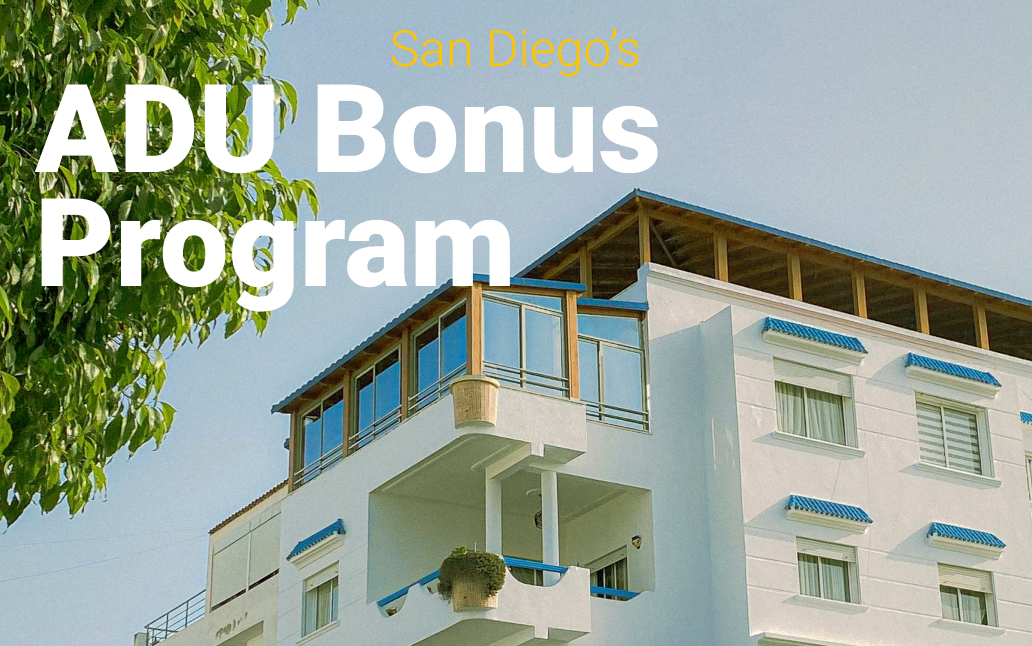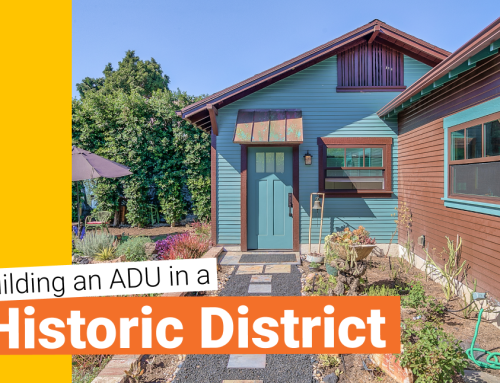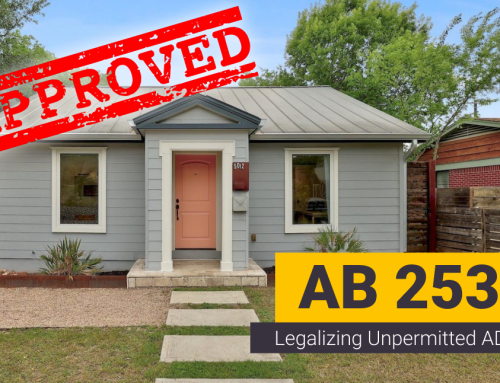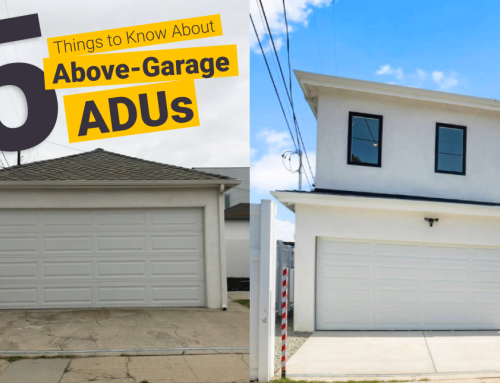As the housing landscape continues to evolve, cities across the United States are exploring innovative solutions to address housing affordability and availability. In San Diego, one such solution has emerged: the Accessory Dwelling Unit (ADU) Bonus Program. Designed to incentivize the construction of ADUs, this ADU Bonus Program offers homeowners a unique opportunity to add essentially an unlimited amount of ADUs to their properties (floor-area-ratio permitting).
Combined with California’s very progressive state ADU regulations, the ADU Bonus Program allows San Diego homeowners to turn their properties into versatile and valuable assets for both themselves and their communities.
Plus, the city is continuously making updates to the program to make it more accessible. Let’s explore what this program entails.
What is the ADU Bonus Program?

San Diego’s ADU Bonus Program presents homeowners with an opportunity to expand their property’s potential. For each deed-restricted ADU, an additional unrestricted ADU is permitted, effectively doubling the capacity for additional dwelling units. Moreover, properties within the Transit Priority Area (TPA) enjoy even greater flexibility, with no limit on bonus ADUs, subject to available space. This provision encourages sustainable development and aligns with the city’s transit-oriented living goals.
Homeowners participating in the ADU Bonus Program can select from various Area Median Income (AMI) levels for deed restrictions, ensuring affordability across diverse income levels within the community. Affordable ADUs must be comparable in size, bedroom mix, amenities, and features to market-rate units. In cases where direct proportionality is challenging, adjustments will be made to maintain parity, whether through aligning bedroom counts or square footage within specified parameters. Through careful planning and adherence to program guidelines, homeowners can leverage ADUs to contribute to the city’s housing goals while maximizing their property’s value.
Homeowners and designers have been getting creative with the program, essentially building backyard apartment complexes to maximize the available space on their property. In terms of creating more affordable housing, the program has been a massive success.
But, with any program, there are some requirements to consider before you start planning.
What are the requirements for the ADU Bonus Program?

With the Bonus Program, there is a big emphasis on creating more affordable housing. As such, a lot of the criteria that needs to be met is centered around ensuring that these ADUs are accessible to low-mid income residents.
To participate in San Diego’s ADU Bonus Program, homeowners must adhere to specific requirements outlined by the city. Here’s a breakdown:
- Affordability Restrictions: Deed-restricted ADUs targeting moderate-income levels must maintain affordability restrictions for 15 years, while those aimed at low-income levels require restrictions for 10 years.
- Lien Positions: In single-family zones, affordability restrictions are placed on title in second lien position. Conversely, in multifamily zones, restrictions are in first lien position.
- Income Verification: Property owners must submit income verification to the San Diego Housing Commission (SDHC) before tenant occupancy, allowing SDHC to determine tenant eligibility. Tenants occupying affordable units must provide annual income information to confirm continued eligibility. A $150 annual fee per unit is required for annual monitoring of income.
- Income Thresholds: If tenants’ incomes surpass the income limits, there are specific thresholds dictating their continued occupancy. Very low- and low-income tenants’ incomes may rise to low- and moderate-income levels, respectively. Moderate-income tenants’ income can increase up to 140 percent of the Area Median Income (AMI). Beyond this threshold, tenants receive a 180-day notice to vacate.
- Rent Restriction Notices: Prior to the expiration of the 10- and 15-year affordability restrictions, tenants receive rent restriction expiration notices. These notices are required three years, 12 months, and six months before the restriction expiration date.
Understanding and complying with these requirements is essential for homeowners looking to take advantage of the benefits offered by San Diego’s ADU Bonus Program. By ensuring adherence to program guidelines, homeowners can contribute to the city’s housing objectives while maximizing the potential of their properties.
With all of this in mind, we can now look into the application process.
How do I apply for the ADU Bonus Program?

As with any ADU project, you will need to have a designer or architect draft the permit set. This should include elevations, layout of your entire property, utility plan, roof plan, and more. Permit sets are much more than just a floor plan of the ADU. These are hefty packets sets printed on 18 x 24 paper. They often require a professional with an understanding of the city and state regulations to be completed correctly.
Maxable has a network of vetted designers with years of experience and plenty of successful projects under their belt. If you’re ready to bring your design vision to life and get your ADU Bonus Program application on track, let our team of experts make it happen.
Once you have your permit set ready, your designer will submit it to City of San Diego Development Services Department (DSD), which will then provide the plans to the San Diego Housing Commission (SDHC) for review. SDHC will review the plans and provide project conditions to the DSD and the applicant. To proceed, applicants must also submit the program application, supplemental attachments, and a $600 application fee to cover legal fees directly to the SDHC.
Once the application has been reviewed, SDHC will provide drafts of the affordable housing agreement and deed of trust. These documents will be recorded on the property. After the documents have been recorded, SDHC will sign off on the building permit.
Success of the program so far

In the few years that the program has been in operation, hundreds of projects have already been approved and many more awaiting approval. According to a study by the DCD, the average application includes four to seven additional ADUs. They’ve even seen projects with up to 148 units.
Why is the city so passionate about this program? ADUs have proven to be an effective asset towards combatting the housing crisis. They are relatively quick to build, increase housing density, and offer affordable housing options, aligning with the city’s goals of promoting sustainable urban development and addressing housing affordability challenges.
Getting your ADU project started
San Diego’s ADU Bonus Program presents a remarkable opportunity for homeowners to unlock the full potential of their properties while contributing to the city’s housing goals. By leveraging the flexibility and incentives offered by the program, homeowners can create additional dwelling units that not only meet their needs but also address the pressing challenges of housing affordability and availability in the city.
If you’re considering embarking on an ADU project, now is the time to take action. Whether you’re looking to maximize space, generate rental income, or support sustainable urban development, our team of experts is here to guide you every step of the way.
Don’t let the complexities of the ADU process hold you back. Chat with one of our experts today to get your ADU project on track and unlock the full potential of your property.







